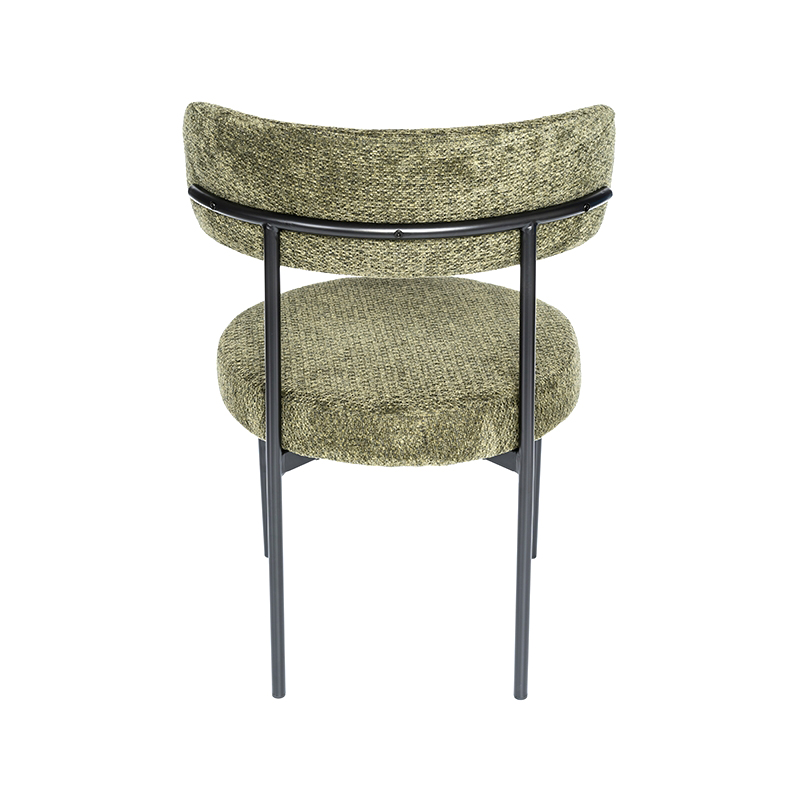No 1255, Xingye Road, Tianzihu Modern Industrial Park, Anji County, Zhejiang Province, China
Selecting the right dining chairs is a crucial decision that impacts the comfort, aesthetics, and functionality of your dining space. Among the myriad options available, the fabric dining chair stands out for its unparalleled comfort, vast design potential, and warmth it brings to a room. This comprehensive guide will delve deep into everything you need to know to make an informed choice, from styles and materials to maintenance and key purchasing considerations.
Fabric dining chairs offer a unique blend of comfort and style that other materials struggle to match. Unlike hard surfaces, fabric provides a soft, inviting feel that encourages long, leisurely meals and conversations. They act as a sound dampener in a room and are available in an almost infinite array of colors, patterns, and textures, allowing for immense personalization. Whether your decor is modern minimalist, rustic farmhouse, or traditionally formal, there is a fabric upholstered chair to complement it perfectly.
Investing in quality dining chairs requires careful thought beyond just appearance. Several practical factors determine the longevity, functionality, and overall satisfaction with your purchase. Understanding these elements will ensure you select chairs that are not only beautiful but also built to last and suit your lifestyle.
The durability of a fabric is scientifically measured by its rub count, which indicates how well it can withstand abrasion. A higher number means a more durable fabric. This is especially important for dining chairs, which experience frequent use.
| 15,000+ rubs | Suitable for decorative use or occasional seating. |
| 15,000 - 25,000 rubs | Ideal for general domestic use, perfect for everyday dining chairs. |
| 25,000+ rubs | Excellent for heavy domestic use or even light commercial applications. |
Choosing the right type of fabric is perhaps the most critical decision. The ideal fabric balances aesthetics, feel, durability, and ease of maintenance. Here’s a breakdown of the most popular options to help you find the best fabric for dining chairs for your home.
The world of modern fabric dining chairs is diverse, moving beyond traditional designs to embrace sleek lines, unique silhouettes, and bold statements. Contemporary design often focuses on simplicity, functionality, and the innovative use of materials.
Maintaining the pristine appearance of your chairs is easier than you think with a proper care routine. The golden rule for how to clean fabric dining chairs is always to check the manufacturer's cleaning code, which is usually found on a label underneath the seat.
For immediate spill response, always blot—never rub—the spill with a clean, absorbent cloth to lift the liquid before it can penetrate the fibers.
Finding stylish and durable affordable fabric dining chairs is entirely possible with a strategic approach. It's about knowing where to prioritize quality and where you can compromise without sacrificing longevity.

Iron Frame, Soft Cushions Simple Fabric Dining Chair - Green/Grey
Absolutely, provided you select the right fabric. While the initial thought might lean toward easy-to-wipe options, modern performance fabrics are a game-changer. Look for treated, stain-resistant fabrics like microfiber, crypton, or any fabric with a high rub count (above 25,000). These materials are engineered to repel spills and stains, making them surprisingly practical for busy family life. The comfort they offer is also a significant benefit for family meals.
For maximum durability, synthetic fabrics or synthetic blends are typically the best choice. Microfiber is a top contender due to its high resistance to abrasion, staining, and fading. Other excellent options include treated velvets and performance fabrics specifically designed for heavy use. Always check the fabric's double-rub count—a rating above 25,000 is ideal for a dining setting that sees daily use.
The frequency of deep cleaning depends on usage. For a household that uses the dining room daily, a thorough deep clean (using the method appropriate for the fabric's cleaning code) every 12-18 months is advisable. For less frequent use, every two years may suffice. However, spot cleaning should be done immediately after any spills, and regular vacuuming with an upholstery attachment is recommended every few weeks to remove dust and crumbs that can grind into the fibers and cause wear.
Reupholstering is a fantastic sustainable and often cost-effective option, especially if the chairs have a well-built, solid wood frame that is still structurally sound. It allows you to completely customize the look of your dining set and choose a fabric that perfectly matches your current decor and durability needs. This process is best for chairs with simple cushion designs; very complex shapes may require a professional upholsterer, which can increase the cost.